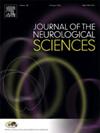Comparative analysis of prognostic scores for functional outcome after ischemic stroke
IF 3.6
3区 医学
Q1 CLINICAL NEUROLOGY
引用次数: 0
Abstract
Background
Comparative data on the predictive performance of stroke prognostic scores in a real-world setting are sparse.
Objective
We aimed to compare the performance of existing scores for acute stroke outcomes in an observational cohort.
Methods
Using data from 12,486 patients with acute ischemic stroke (mean [SD] age, 72.5 [12.6] years; male, 59.4 %) prospectively registered in Fukuoka, Japan, between 2007 and 2017, we evaluated the predictive performance of six stroke prognostic scores, namely ASTRAL, iScore, PLAN, HIAT, SPAN-100, and THRIVE. The discriminative power of the scores was evaluated by the area under the receiver operating characteristic curve (AUROC). Calibration was evaluated using calibration plots. Overall performance, incorporating both discrimination and calibration, was assessed using Brier score.
Results
In comparative analyses using un identical study population, AUROCs for predicting 3-month poor functional outcome were 0.87 for ASTRAL, 0.88 for iScore, and 0.89 for PLAN among the scores for all patients, and 0.74 for HIAT, 0.81 for SPAN-100, and 0.78 for THRIVE among the scores for patients receiving reperfusion therapy. The calibration plots showed fair agreement between the outcome predictions and the observed outcomes in all scores, and no substantial difference was found among the scores. The analysis of overall performance indicated that PLAN was better than ASTRAL, whereas no significant difference was found among HIAT, SPAN-100, and THRIVE.
Conclusions
The predictive performance of all six scores was good, even in our observational cohort, reflecting the real-world setting. The prognostic scores could provide useful information for the management of acute stroke patients.
缺血性脑卒中后功能预后评分的比较分析
背景:在现实世界中,中风预后评分预测性能的比较数据很少。目的:在一个观察性队列中比较现有急性卒中预后评分的表现。方法采用12486例急性缺血性脑卒中患者(平均[SD]年龄72.5[12.6]岁;2007年至2017年期间在日本福冈前瞻性登记的男性(59.4%),我们评估了六种中风预后评分的预测性能,即ASTRAL, iScore, PLAN, HIAT, SPAN-100和THRIVE。用受试者工作特征曲线下面积(AUROC)评价评分的判别能力。使用校准图评估校准。综合判别和校准的总体表现采用Brier评分进行评估。结果在使用不同研究人群的比较分析中,预测3个月功能不良结局的auroc在所有患者的评分中,ASTRAL评分为0.87,iScore评分为0.88,PLAN评分为0.89,在接受再灌注治疗的患者评分中,HIAT评分为0.74,SPAN-100评分为0.81,THRIVE评分为0.78。校正图显示,所有评分的结果预测与观察结果基本一致,评分之间没有显著差异。综合性能分析表明,PLAN优于ASTRAL,而HIAT、SPAN-100和THRIVE之间无显著差异。结论:即使在我们的观察队列中,所有六个评分的预测性能都很好,反映了现实世界的环境。预后评分可以为急性脑卒中患者的治疗提供有用的信息。
本文章由计算机程序翻译,如有差异,请以英文原文为准。
求助全文
约1分钟内获得全文
求助全文
来源期刊

Journal of the Neurological Sciences
医学-临床神经学
CiteScore
7.60
自引率
2.30%
发文量
313
审稿时长
22 days
期刊介绍:
The Journal of the Neurological Sciences provides a medium for the prompt publication of original articles in neurology and neuroscience from around the world. JNS places special emphasis on articles that: 1) provide guidance to clinicians around the world (Best Practices, Global Neurology); 2) report cutting-edge science related to neurology (Basic and Translational Sciences); 3) educate readers about relevant and practical clinical outcomes in neurology (Outcomes Research); and 4) summarize or editorialize the current state of the literature (Reviews, Commentaries, and Editorials).
JNS accepts most types of manuscripts for consideration including original research papers, short communications, reviews, book reviews, letters to the Editor, opinions and editorials. Topics considered will be from neurology-related fields that are of interest to practicing physicians around the world. Examples include neuromuscular diseases, demyelination, atrophies, dementia, neoplasms, infections, epilepsies, disturbances of consciousness, stroke and cerebral circulation, growth and development, plasticity and intermediary metabolism.
 求助内容:
求助内容: 应助结果提醒方式:
应助结果提醒方式:


